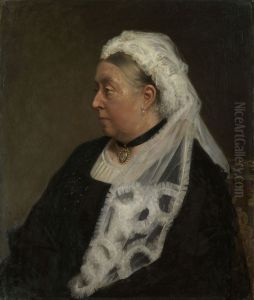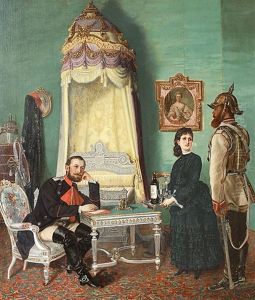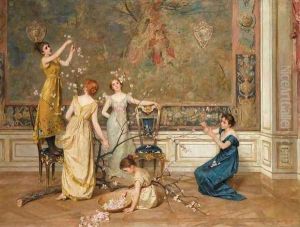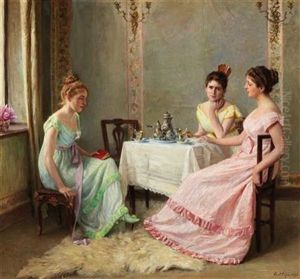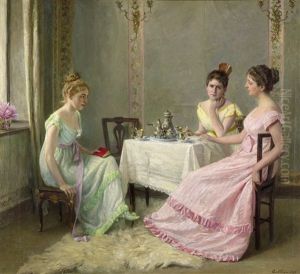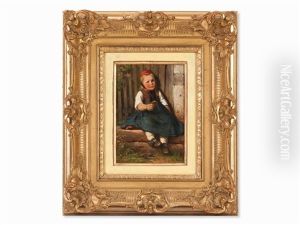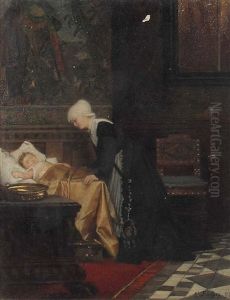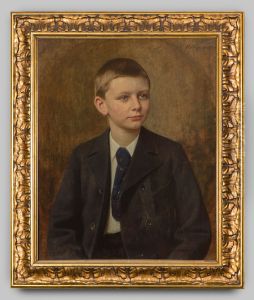Carl Rudolph Sohn Paintings
Carl Rudolph Sohn was a notable German painter born on June 1, 1845, in Düsseldorf, Germany. He hailed from a family deeply entrenched in the arts; his father, Karl Ferdinand Sohn, was a well-respected member of the Düsseldorf school of painting, a movement known for its detailed, academic approach to art. This familial background provided Carl Rudolph with an early exposure to the arts and a solid foundation in the traditional techniques of painting.
Educated at the Düsseldorf Academy under the tutelage of his father and other prominent artists like Wilhelm Sohn, Carl Rudolph Sohn quickly developed his own artistic voice. He specialized in portraiture and genre scenes, imbuing his works with a meticulous attention to detail and a vibrant, evocative sense of life. His skill in capturing the essence of his subjects, coupled with his masterful use of light and shadow, garnered him considerable acclaim during his lifetime.
Sohn's career flourished in the latter half of the 19th century, a period marked by a growing public interest in realistic, narrative art. He became a member of the prestigious Düsseldorf Artists' Association, also known as Malkasten, which played a significant role in shaping the cultural landscape of the region. Through this association, Sohn engaged with a wide network of artists, fostering a creative environment that influenced his work.
Despite his success, Carl Rudolph Sohn remained deeply connected to the Düsseldorf art scene, rarely venturing far from his roots. His dedication to his craft and his ability to capture the nuance of human expression ensured his portraits were highly sought after by the elite of German society. Beyond portraiture, his genre paintings, which often depicted scenes of daily life with a remarkable degree of realism and emotional depth, contributed to his legacy as a pivotal figure in German art.
Carl Rudolph Sohn's impact extended beyond his immediate circle, influencing the next generation of artists. He was known for his generosity in sharing his expertise with younger painters, thus ensuring the continuation of the Düsseldorf school's traditions and techniques. He passed away on November 14, 1908, in Düsseldorf, leaving behind a body of work that continues to be celebrated for its technical excellence and emotional resonance. His contributions to German art were not only in his creations but also in his role as a mentor, shaping the path for future artists in the region.



